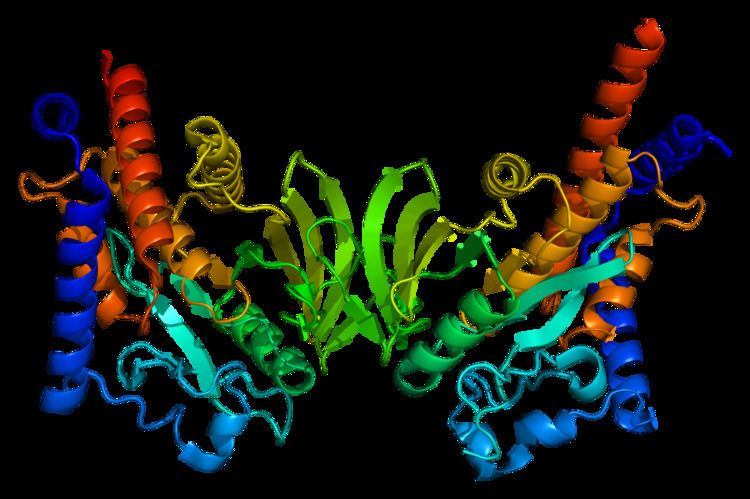Entrez 26191 | Ensembl ENSG00000134242 | |
 | ||
Aliases PTPN22, protein tyrosine phosphatase, non-receptor type 22 (lymphoid), LYP, LYP1, LYP2, PEP, PTPN8, protein tyrosine phosphatase, non-receptor type 22 External IDs MGI: 107170 HomoloGene: 7498 GeneCards: PTPN22 | ||
Protein tyrosine phosphatase, non-receptor type 22 (lymphoid), also known as PTPN22, is a protein that in humans is encoded by the PTPN22 gene. This gene can be expressed in different forms. PTPN22 affects the responsiveness of T and B cell receptors, and mutations are associated with increases or decreases in risks of autoimmune diseases.
Contents
Molecular biology
The gene is located on the short arm of Chromosome 1 near the centromere (1p13.2) on the Crick (minus) strand. It is 57,898 bases in length and encodes a protein of 807 amino acids (molecular weight 91,705 Da). There are 24 exons in the gene and 21 transcript variants encoding 10 distinct proteins are known. The proteins are located in the cytoplasm.
Function
This gene encodes a protein tyrosine phosphatase which is expressed primarily in lymphoid tissues. This enzyme is involved in several signalling pathways associated with the immune response. Based on models of the murine phosphatase, structural identification, and human genetics the phosphatase forms complexes with C-src tyrosine kinase (Csk), associated with the control of Src family members. The mutation Arg620Trp disrupts binding to Csk, alters the responsiveness of T and B cell receptors, and is associated with autoimmune diseases. There are other suggestions that the phosphatase regulates CBL function in the T cell receptor signaling pathway. Other interactions are likely.
Disease association
The common 1858T (rs2476601) Arg620Trp nonsynonymous single nucleotide polymorphism located in the PTPN22 gene has been associated with autoimmune disorders, including an increased risk of Type 1 Diabetes, rheumatoid arthritis, Systemic Lupus Erythematosus, Vitiligo and Graves' disease, but a decreased risk of Crohn's disease.
A recent study suggests that the mutation does not, on a population basis, reduce life span. The mutation may be conserved in human evolution because it may provide a hyper-immune response to infectious disease.
Mutations in PTPN22 are over-represented in breast cancer.
